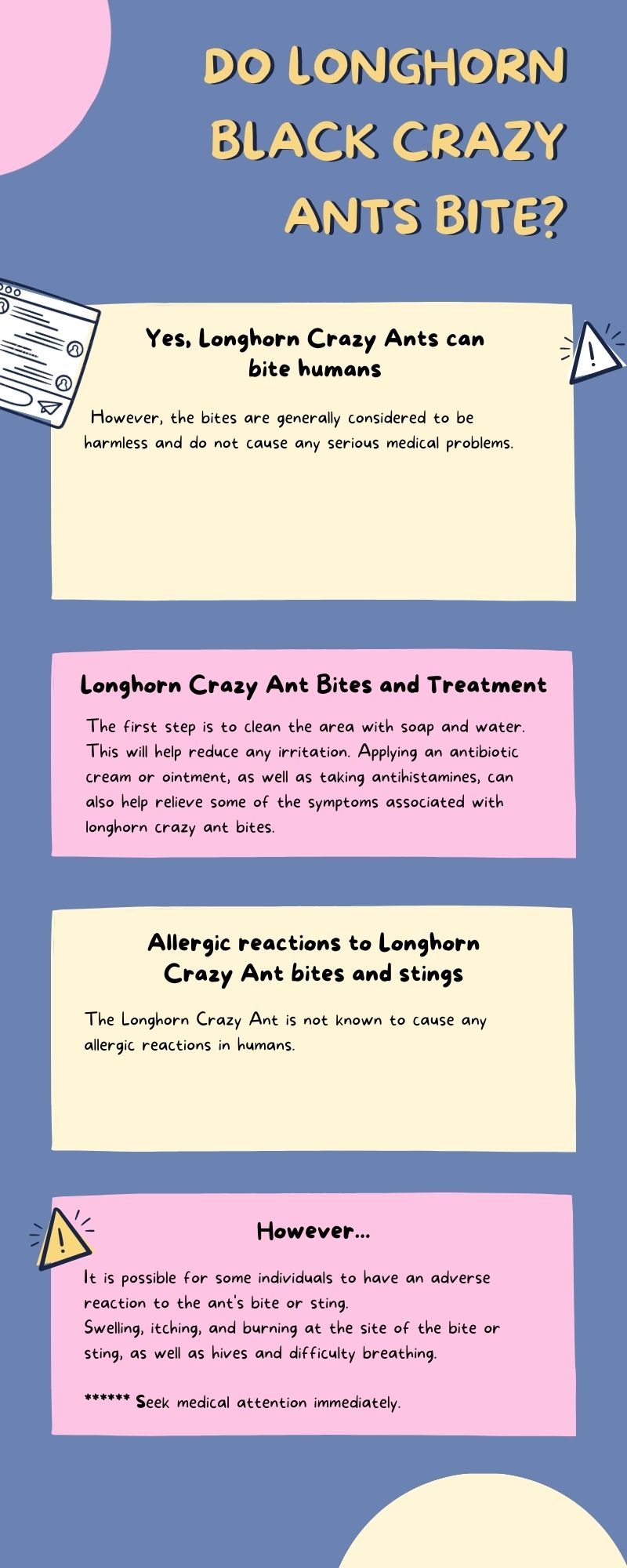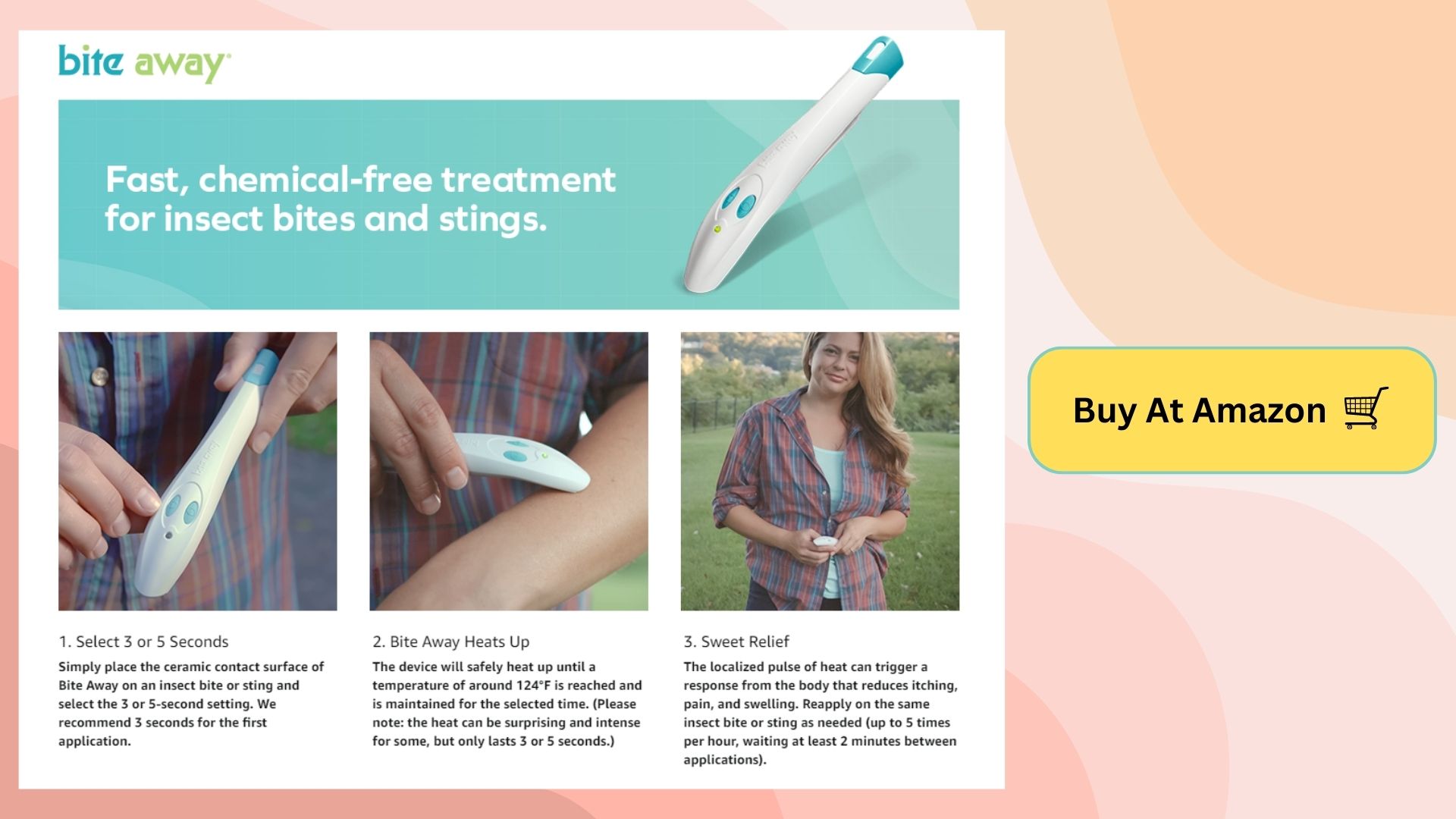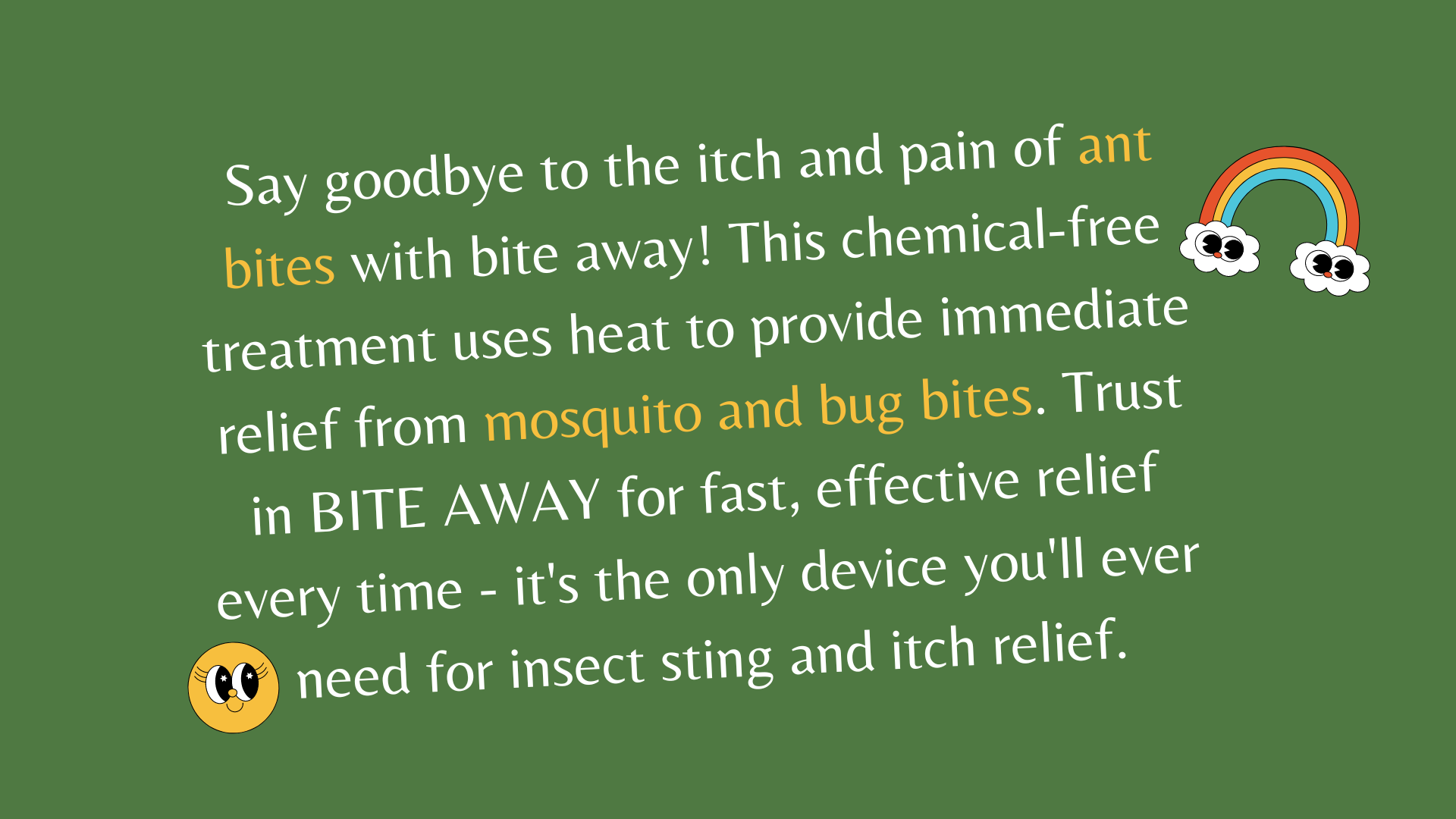Your PERSONAL ANT-CYCLOPEDIA
Longhorn crazy ant (Paratrechina longicornis)
Longhorn crazy ant Scientific Classification
Phylum Belonging: Arthropods
Class of Belonging: Insects
Order To Which It Belongs: Hymenoptera
Family In Which It Is Located: Formicidae
Subfamily In Which It Is Located: Formicinae
Genus: Paratrechina
Species: Longhorn crazy ant (Paratrechina longicornis)
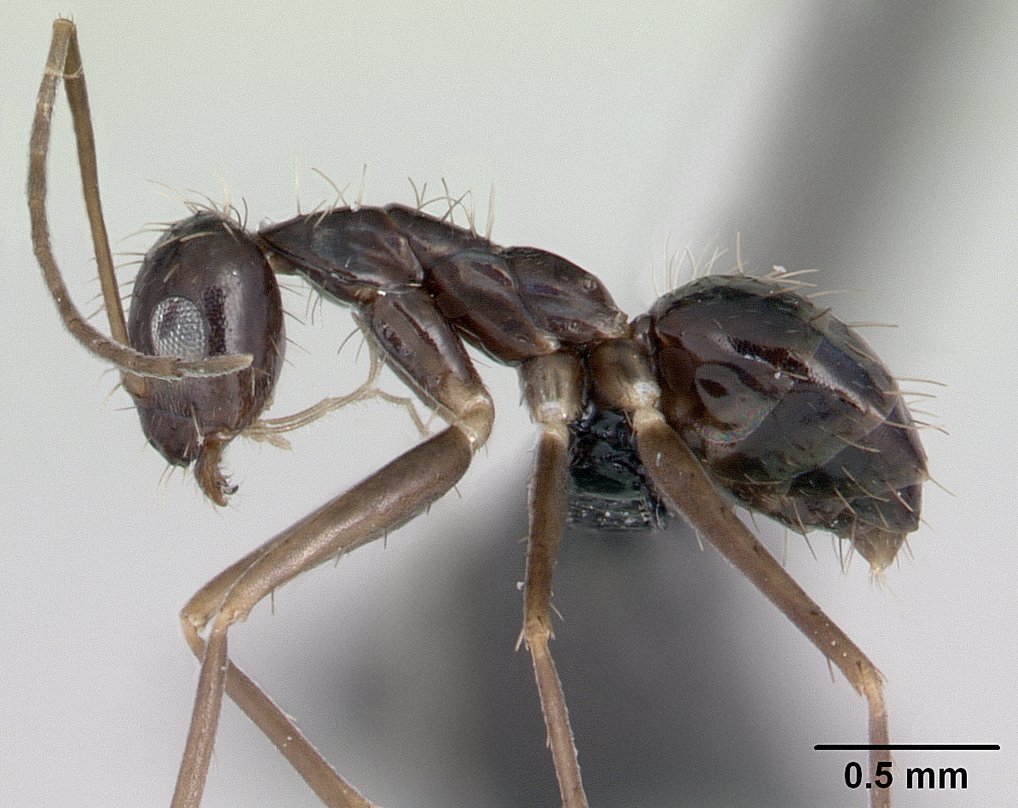
Post Audio Longhorn crazy ant
Welcome once again to our ant encyclopedia!
Today we have to talk about one of the most fascinating ants in the world of arthropods, and this could not be other than the genus Paratrechina. In particular, we will talk about the Longhorn Crazy Ant-Paratrechina Longicornis (commonly known as Black Crazy Ant).
Out there you can find a lot of information about this ant, however in this space, we will give ourselves the task of providing you in the easiest and most informative way, everything you need to know about how it behaves in its natural habitat. From their unique characteristics to their role in the ecosystem, we offer a comprehensive introduction to the best techniques for identifying black crazy ant queen sizes, behavior, and even where you can find black crazy ant queens for sale if you are interested in ant farming.
Finally, we will explain the best strategies to get rid, of black crazy ants in case you have an uncontrollable plague of these little invaders.
Without further ado, make yourself comfortable and join us on this incredible journey through the world of Black Crazy Ants.
Longhorn crazy ant Identification
“Pest Stats”
| Color | Dark brown to black with a gray sheen |
| Legs | 6 Legs |
| Shape | Long, segmented |
| Size | 1/16 – 1/8 (2.2 – 3.0 millimeters) |
| Antennae | Yes They Have Antennae |
| Region | Native to Southeast Asia |
What Does Longhorn Crazy Ant Look Like?
Description
They are reddish-brown in color and have very long legs that can measure up to 1.5 inches in length. Their antennae are also long, measuring almost twice as much as their body length. These ants tend to be more aggressive than other ant types due to their large size and fast movement when disturbed or searching for food.
Longhorn Crazy Ant Geographical distribution By Country
The Longhorn Black Crazy Ant is native to tropical areas of Asia but has been accidentally introduced to other parts of the world, such as
- Australia
- Australia, Queensland
- China,
- Singapore,
- And New Zealand.
It was first reported in Florida in 2001 and is now found throughout much of the southeastern United States.
Longhorn Crazy Ant Distribution Map In Us
These ants have been reported throughout the south-eastern United States including Texas, Louisiana, Mississippi, Alabama, Florida, and Georgia.
They are most commonly found in urban areas as they prefer disturbed habitats with moist conditions.
Longhorn Black Crazy Ant Arizona
Longhorn Black Crazy Ant Atlanta
Longhorn Black Crazy Ant Texas
Longhorn Black Crazy Ant Florida
Longhorn Black Crazy Ant Virginia



Join The Ant Farming Club!
If you are looking for an Ant Farm and you don’t know which one to choose, or on the other hand you already have your first ant farm, but you don’t know how to grow your colony, take care of it or feed it. Here we offer you the best tips and products to make your colony grow healthy and strong.
In the next section, you will also find advice from professionals to choose the best products on the market such as:
- Luminous Gel
- Ant Farm Sand
- LED light
- Live Ants
- Full Ant Farm Kits For Kids
Ant Farming Club is perfect for kids wanting their first ant farm or schoolteachers wanting to show their students the biology of ants in a natural habitat.
Join
Join and learn all about the world of ants and ant farming.
Products & Discounts
Find discounts and advice from professionals about the best products on the market in 2022.
Meet
Connect with people who are passionate about the world of entomology.
Do Longhorn Black Crazy Ants Bite?
Yes, Longhorn Crazy Ants can bite humans. However, the bites are generally considered to be harmless and do not cause any serious medical problems.
Longhorn Crazy Ant Bites and Treatment
Their bites can be painful and irritating.
If you are bitten by a Longhorn crazy ant, the first step is to clean the area with soap and water.
This will help reduce any irritation or infection that may occur due to the bite. Applying an antibiotic cream or ointment, as well as taking antihistamines, can also help relieve some of the symptoms associated with longhorn crazy ant bites.
Allergic reactions to Longhorn Crazy Ant bites and stings
The Longhorn Crazy Ant is not known to cause any allergic reactions in humans.
However, some individuals can have an adverse reaction to the ant’s bite or sting.
Symptoms may include swelling, itching, and burning at the site of the bite or sting, as well as hives and difficulty breathing.
Longhorn Black crazy ant bite won’t go away
If you experience any of these symptoms after being bitten or stung by a Longhorn Crazy Ant, seek medical attention immediately.
You may also need to take an antihistamine or other medications recommended by your physician in order to reduce swelling, itching, pain, and any other symptoms associated with the bite.
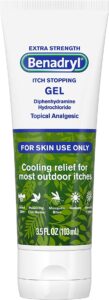
About this item
- Benadryl Extra-Strength Anti-Itch Gel temporarily relieves pain and itching associated with insect bites, minor burns, sunburn, minor skin irritations and rashes due to poison ivy, poison oak and poison sumac.
- Topical analgesic gel provides cooling, anti-itch relief from most minor pains and outdoor itches associated with insect bites.
- The cooling gel provides the relief of pain and itching associated with insect bites.

More Immediate Treatment management for Longhorn Crazy Ant Bites:
Long-term Treatment management:
If you’ve been bitten by a Longhorn black crazy ant, the best way to manage your bites is through a combination of medical treatment and self-care.
Medical Treatment: First, it’s important that you seek immediate medical attention if you have severe pain or any signs of infection. Your doctor may prescribe antibiotics and antihistamines to reduce swelling and itching. If necessary, they may also refer you to an allergist for further testing or treatment options.
Self-Care: In addition to seeking medical attention, there are several things that can be done at home to help treat longhorn black crazy ant bites.
These include:
1) Keeping the area clean with soap and water as soon as possible after being bitten. This helps avoid any secondary infections from occurring;
2) Using an ice pack on the bite site for up to 15 minutes at a time every two hours;
3) Applying an over-the-counter topical antibiotic ointment such as Neosporin;
4) Taking over-the-counter medications like ibuprofen or acetaminophen (Tylenol), which can help alleviate some of the pain associated with longhorn black crazy ant bites.

About this item
- Benadryl Extra-Strength Anti-Itch Gel temporarily relieves pain and itching associated with insect bites, minor burns, sunburn, minor skin irritations and rashes due to poison ivy, poison oak and poison sumac.
- Topical analgesic gel provides cooling, anti-itch relief from most minor pains and outdoor itches associated with insect bites.
- The cooling gel provides the relief of pain and itching associated with insect bites.

YOU CAN ALSO LISTEN HERE!
Audio Longhorn crazy ant 2

Natural Behavior Longhorn Crazy Ant
The natural behavior of Longhorn Crazy Ants is to forage in search of food, especially proteins and sugary substances.
These ants require a warm climate with plenty of resources such as dead insects, flower nectar, sugary liquids from plants, honeydew from aphids, and other sources of nourishment.
Longhorn Black Crazy Ants are also known to occasionally feed on other small invertebrates like spiders and slugs
They can travel long distances from their nesting sites in order to find food sources. They often build large nests in the soil or under rocks that provide shelter from predators and other dangers.
In terms of colony-building activities they construct nests which typically contain multiple chambers connected by tunnels; these are used to store food reserves as well as eggs that hatch into larvae which eventually become adult ants capable of reproduction.
When disturbed, these ants will quickly move away or swarm around any potential threats.
Some members of the species may also have a defensive role by releasing pungent odors when threatened.

Funny Facts About Longhorn Crazy Ant
-22 degrees Fahrenheit to 122 degrees Fahrenheit
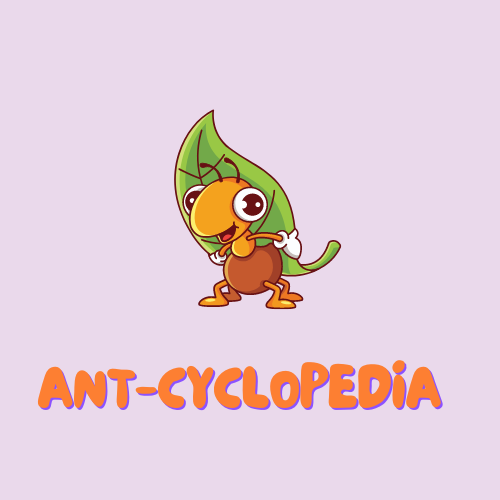
Yes, the Longhorn Black Crazy Ant is able to survive in extreme temperatures.
It has been observed living and thriving in temperatures ranging from -22 degrees Fahrenheit to 122 degrees Fahrenheit.
The ant’s ability to survive such drastic temperature changes makes it a valuable species for pest control purposes as it can quickly adapt and proliferate in different environments.
Longhorn black crazy ant run speed
The run speed of a Longhorn black crazy ant is approximately 0.4 meters per second, which is equivalent to 1.44 kilometers per hour or 0.9 miles per hour.
Longhorn black crazy ant fungus
There is no known specific fungus that affects the Longhorn black crazy ant. However, they are susceptible to certain fungal diseases such as mycoses and entomopathogenic fungi, which can be introduced through contact with infected organisms or spores in the environment.
Longhorn Crazy Ant Photos And Pictures



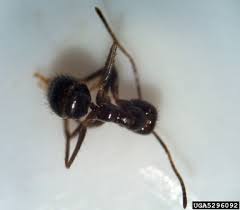
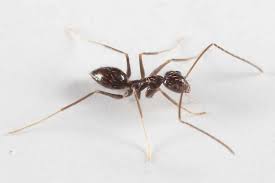
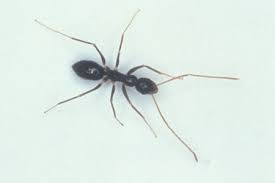
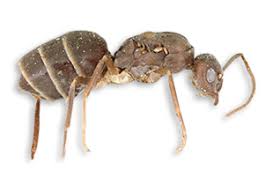
Seasonal Colony Trends [All You Should Know]
Longhorn Black Crazy Ant Reproduction (Reproductive Biology)
Habits
The Longhorn Crazy Ant (Paratrechina longicornis) reproduces via a process known as parthenogenesis.
This means that the female ant does not need to mate with a male (black crazy ant alate) in order to produce offspring, and instead can give birth to live young without copulation.
Each individual ant is capable of producing both male and female offspring, which can then go on to create their own colonies. (Nuptial flight).
The reproductive cycle time for these ants tends to be approximately 60 days from egg-laying until the emergence of adult ants – much shorter than many other species of ants.
Longhorn Crazy Ant Environmental Impact
This species of ant is an aggressive invader that can out-compete native ants and other arthropods for food, habitat, and resources. It is also known to displace beneficial predators like ground beetles, dragonflies, and spiders.
Longhorn Crazy Ant Human Impact
Threats To Humans (Are Longhorn Crazy Ant harmful?)
No, Longhorn Black Crazy Ants are not considered harmful to humans, and definitely cannot kill humans. However, as with all ants, they should still be treated with caution as some people may have an allergic reaction if bitten or stung.
In addition to its impacts on the environment, this ant could also cause problems for humans by infesting homes in large numbers in search of food or shelter. The sheer number of these ants could lead to sanitation issues as well as damage electrical wiring by shorting it out with their bodies.
YOU CAN ALSO LISTEN HERE!
Post Audio Longhorn crazy ant 3



Longhorn Crazy Ant Education (Longhorn Crazy Ant Life Cycle)
1. Egg: Longhorn black crazy ant eggs are laid by the queen and develop in a larval stage of growth, which will take about two weeks to complete.
2. Larva: After hatching from their eggshells, the larvae feed on food provided by the colony through trophallaxis, or regurgitation of partially digested food from adult ants. During this time they molt three times before entering into pupal development.
3. Pupa: The pupal stage takes place within sealed cocoons made up of silk secreted from special glands in their abdomens and is completely inactive during this stage, which can last up to two weeks long depending on environmental conditions such as temperature and humidity levels.
4. Adult: Once fully developed, newly emerged adult ants will quickly join the colony’s workforce as foragers or defenders while still undergoing physical changes that include darkening of coloration as well as gaining their characteristic long antennae that give them their name “longhorn black crazy ant”. Following adulthood, these ants can live anywhere between three months to four years depending on available resources and other factors such as predation risk or competition with other colonies in the area…
Environmental Requirements
Longhorn Crazy Ant should be kept in a temperature range between 25 and 35°C.
They thrive in warm, dry climates with low humidity levels of 45%-65% relative humidity.
These ants need access to protein sources such as insects, small invertebrates, fish food or even pieces of meat. Also, require access to fresh clean water at all times and will also drink from nectar or honeydew produced by other insects in their environment.
Humidified soil is essential for creating a suitable nesting area with proper drainage since these ants do not build mounds like some species of ants.
A sand substrate can help create an ideal nest as well; it should be mixed with soil and fine pebbles for ventilation purposes.
The enclosure must provide plenty of climbing surfaces such as twigs and branches that are free from any potential toxins (i.e., no pesticide residue).
Longhorn Black Crazy Ant Nutrition And Diet
Its diet consists of proteins, carbohydrates, fats, vitamins, and minerals.
Proteins: This type of ant prefers protein sources such as dead insects and other arthropods including spiders, larvae, eggs, and pupae. They are also known to eat carrion (dead animals) when it’s available.
Carbohydrates: These ants feed on plant materials including fruit juices or nectar from flowers as well as honeydew excreted by certain kinds of sap-sucking insects called aphids.
Fats: The Longhorn Black Crazy Ant is an omnivore that will consume fat sources like seeds and animal prey items.
Vitamins & Minerals: During their foraging activities they typically ingest all sorts of soil particles which provide them with essential nutrients like vitamins A and E as well as calcium carbonate for strong exoskeletons.
Nests and Colonies
Generally, they comprise multiple sub-colonies connected by trails that may stretch hundreds of feet or more.
The black crazy ants themselves can be identified by their long antennae and dark coloration. They build large mounds near sources of moisture, such as riverbanks or swamps, and then spread outward from there to create expansive networks of nests and tunnels beneath the ground.
These colonies can contain tens of thousands or even millions of individuals working together to form a superorganism capable of defending against predators, foraging for food, and reproducing quickly.
Longhorn Crazy Ant Queens
Longhorn Crazy Ant Queen Appereance
Longhorn crazy ant queens are usually 4-5 mm in length, and they have a reddish-brown coloration.
They have long antennae that are noticeably longer than their body as well as three pairs of legs, a rounded head, and small eyes.
Purpose In The Colony
The purpose of the longhorn black crazy queen ant in the colony is to lay eggs and reproduce for generations which will eventually result in new workers for the colony.
Queens can live up to two years or more and produce thousands of offspring during their lifetime.
As the primary egg layer, she is essential for sustaining the colony’s population over time.
The Best Products 2023
Formicarium
Formicarium
Ant Farm
Ecosystem
Entomology supplies
Test Tube Packs
Pipettes
Feeding Dishes
Ant Foods
Ant Nectar
Feeders
Eco-Fresh Rice Worms
Fly Larvae
Kits
Terrarios
Nest Kit
Ant Farm Sand
Ant Farm Neon Gel
YOU CAN ALSO LISTEN HERE!
Post Audio Longhorn crazy ant 4
Longhorn Crazy Ant Pest Prevention & Control
The longhorn crazy ant’s ability to inhabit indoor as well as outdoor areas makes it one of the most difficult ant species to control. In the same way, it is well known that they often look for food in areas far from their colonies and their nests, which makes it even more difficult to identify their anthills.
In order to control this plague, we need to do thorough inspections of our homes, identify the most common areas both inside our home and outside where crazy ants nest and apply a series of preventive and proactive actions that will allow us to gain the upper hand against these small invaders, such as:
- The constant sanitation of our home
- Elimination of your most common power sources
- In addition to limiting the right conditions that attract these arthropods to our property.
At first, it will seem like an almost impossible battle, however, with patience and understanding of our enemy, we will be able to control the size of the longhorn black crazy ants populations and eliminate them in the long term.
In this section, we will give ourselves the task of providing you with all the necessary information to control this pest correctly.
Wanna learn more about Ants? Join an Online Community of more than 1000 Readers Around the Country.
Here you can sign in to our newsletter to receive daily emails with funny facts, interesting details about ants, step-by-step tutorials, and even good practices to have a healthy ant farm colony. We’ll be more than happy to have you in…

How to Get Rid of Longhorn Crazy Ant (Easy Steps)
1 – First Step: Inspection & Control
1. Seal off visible entry points: Start by sealing off any cracks or crevices around your home that can provide access for the ants to enter. This includes checking on windows, door frames, and other potential paths of entry into your home. Caulk any openings you find and use steel wool as a material to fill in larger gaps if necessary.
2. Store food properly: Make sure all food items are stored in air-tight containers or bags so that they remain inaccessible to the ants. Additionally, sweep up crumbs and regularly clean counters and tables where food is prepared or consumed to reduce the attraction for the crazy ant colonies nearby.
3. Avoid clutter: Clutter provides ideal conditions for crazy ant infestations; it’s an easy place for them to hide and nest in addition to providing ample resources from which they can feed (such as bits of paper, cardboard boxes, etc.). Keep things organized within your home as much as possible—especially near entrances—and dispose of old furniture or materials if needed (which may already be serving as a breeding ground).
4. Use bait traps: Baits offer one of the most effective ways of controlling these pests without having to resort to chemical sprays/powders due to their ease of application and slow-acting poison formula which allows those who consume it enough time to return back home before dying out among their colony members – spreading its effects amongst the entire population with greater success rate than traditional methods would allow otherwise. Common baits such as boric acid mixed with sugar water solution placed strategically inside shallow containers should suffice when dealing with persistent problems but make sure not to let children come near those locations while doing so!
2 – Second Step: Natural Methods To get rid of Longhorn Crazy Ant
Outdoor And Indoor Organic Longhorn Crazy Ant Pest Control Products
Diatomaceous Earth
Diatomaceous Earth is a naturally occurring soft sedimentary rock that has been ground down to a fine white powder.
This powder damages the exoskeleton of insects, so it acts as a barrier that Longhorn Crazy Ant won’t cross.
If you have potted plants on a shelf, you can put a small amount of diatomaceous earth down by the legs of the shelf, preventing ants from getting up onto the plants.
These barriers can be put virtually anywhere, both indoors and outdoors.
While Diatomaceous earth is safe for humans to handle and even eat, it does create fine dust that should not be inhaled.

PROS About Diatomaceous Earth
Among its most striking advantages is the low risk to the health of people, children, and pets, as well as the residual years that this compound can have in our home, providing extra protection against pests. This material is not recommended for use on carpets or floors that you would vacuum.
CONS About Diatomaceous Earth
Although this product represents a non-chemical solution to avoid chemical pesticides. This powder can have some drawbacks. An example of this is that insects need to have direct contact with the material, as well as prolonged contact for it to have a greater effect. This means, that if we decide to use this. We must distribute it throughout our home in large quantities. On the other hand, Diatomaceous Earth must be kept dry, so it is not a good idea if we want to use it in our gardens that are damp from irrigation.
Despite its low toxicity. This material could not be used to kill ants if it did not have some level of danger to the health of insects, so the use of dust masks is recommended, as well as applying it in ventilated areas since this dust could cling to the mucous membranes of the nose and mouth. Also, the dust could fly and generate allergies if we apply it in places where there are fans or air conditioning.
Boric Acid
Boric Acid is a type of Acid found in many naturally occurring minerals, such as borax. Borax is found in many cleaning products, including some types of toothpaste.
Boric Acid has a very low toxicity level for mammals but not for ants. It interferes with their digestive system and slowly terminates them.
The trick is to keep the level of boric Acid low enough so that it travels through the colony and makes it to the queens and young before killing the ants.
I will give you a personal recommendation of a product that is currently on the market called Terro. This contains borax, and I found it effective against Longhorn Crazy Ant.
You can also find recipes online to make your own bait at home using borax. (Here are the steps if you are interested)

PROS About Boric Acid
This product dissolves easily in water, which allows us significant savings. On the other hand, it is more granular than powder. Which makes it less likely that we will inhale it by mistake.
It is useful for other types of pests, such as cockroaches.
CONS About Boric Acid
In very humid climates, if not stored properly, it can become damp and ruined. Therefore, it is recommended to store the mixture in a gallon Ziploc bag to keep it dry and protected when not in use.
Essential oils
Longhorn Crazy Ant communicate with each other using pheromones. A forager that finds food marks a trail on the way back to the colony. This scent trail is followed by other ants, and these ants then reinforce the trail when they head back to the colony with food.
Pheromones also help ants tell each other apart, warn each other of danger and communicate all sorts of messages we’re only beginning to understand.
Most essential oils have a very strong fragrance. We can use this strong fragrance to mask pheromone trails and disrupt the coordination of ants. This method, in addition to being very efficient, allows you to drive away the ants in a natural way without causing them harm.
Essential oils can be added to soapy water that can be used to clean pots and shelves where we keep cacti and succulents. This will mask any previous messages ants left behind to tell other ants… HEY! There is a good food source, water, or shelter.
My Favorite essential oils to use for ants are:
- Peppermint
- Cedarwood
- Lemongrass and
- Clover
However, there is a high range of essential oils that we can use to keep ants away from our homes. Below we offer you a select list of the most efficient oils with the best results on the market.

Pros About Essential Oils
These essential oils represent rapid elimination and residual repellency. which means many months of additional protection.
On the other hand, this represents a highly respectful pest control with our environment.
In the case of living with other beneficial insects for us, such as bees or other pest-control insects. These represent minimal risk.
Finally, as we all know. Essential oils offer us a natural and pleasant fragrance for our home.
Cons About Essential Oils
Essential oils are very useful for many purposes despite their effectiveness in pest control. We may need large amounts to eradicate large ant colonies. Essential oils are expensive, so it can cost us a few dollars to completely eradicate an ant colony.
3 – Third Step: Insecticides and Ant Baits To Control Longhorn Crazy Ant (Best Crazy Ant Killer)
Best Ant Bait For Longhorn Crazy Ant
We recommend using an ant bait containing borax or boric acid as the active ingredient. These baits have been proven to be very effective at controlling Longhorn Crazy Ants and other species of ants.
Place the bait in areas where you’ve noticed ant infestations, such as near windows, doors, baseboards, plumbing fixtures and other points of entry for these pests.
Be sure to keep children and pets away from any ant bait products!
MORE Longhorn Crazy Ant ANT BAITS
- Baits (protein/fat-based baits).
- Honeydew Aphid Baits
- Nectar baits
- Plant product baits as well as sugary carbohydrates.
Sugar feeding cycles
Sugar feeding cycles for Longhorn Black Crazy Ants are similar to most other ant species.
During the day, they will collect sugar sources from foliage, flowers, and other food sources in their environment. The ants then bring this sugar back to their nest where they store it in special chambers for later use.
At night, when the colony is less active, the ants gather around a central location and increase their level of activity as they feed on stored sugars. This cycle continues until the amount of stored sugars has been used up or consumed by the colony before being replenished once more with new sources found from outside the nest.
Longhorn Black Crazy Ant Protein/Fat Feeding Cycles
It has been observed that these ants feed alternating between short periods of high protein intake followed by longer periods of higher fat feeding.
This type of diet helps the ants survive during times when food sources are scarce, as it provides more energy over time than just consuming proteins or fats alone would. During the protein period, the ants will consume simple carbohydrates (such as sugar) and small insects like aphids and other Homoptera.
During the fat phase, they will consume oil from seeds, honeydew secretions from plants, fatty portions of plant material (such as pollen), and carrion from dead animals or birds. Depending on their local conditions, some populations may have different cycles than others due to availability or preference since each population may vary in terms of what types of food are available to them at any given time throughout their life cycle.
Longhorn Crazy Ant Control Using Insecticides
Now, just in case none of the tricks discussed in this article have been enough to control your pest problem. It will be necessary to up the bet a bit and use insecticides.
Here are the steps to follow to eradicate your LongHorn Crazy Ants problem using insecticides.
1. Use an insecticide containing lambda-cyhalothrin such as Demon Max or Talstar to treat the ant infestation indoors. Apply it to cracks, crevices, and other areas where ants are commonly found in your home.
2. Place ant baits containing fipronil near entry points and along the trails of Longhorn crazy ants for long-term control of colonies outside your home. Ant baits work by introducing a small amount of poison that the colony will take back to their nest resulting in slow but effective extermination over time.
3. Make sure to use residual sprays around windows, door frames, eaves, window sills, and other indoor/outdoor areas where you have seen these ants entering your home regularly as this will help provide a layer of protection against new infestations from occurring again after treatment has been applied initially
4. Monitor treated areas for any further activity and repeat applications if needed until you notice no more ant activity present within your property.
Pesticide
Longhorn Crazy Ant Control Using Pesticides
Finally, the most effective way to control Longhorn Black Crazy Ants is by using a farm pesticide.
These types of ants are very small and fast-moving, so they can be difficult to target with traditional methods. The best thing to do is to use an insecticide that will kill the adult ants as well as their eggs and larvae. Some common products used for this purpose include pyrethrin, permethrin, malathion, cyfluthrin, or bifenthrin.
It is important that you follow all the instructions on the packaging carefully when applying these pesticides in order to ensure the safe and effective application of the product. Once applied, it should take about four days for the chemicals to start working effectively against these pests.
Another method is to contact a company specialized in treating pests with pesticides. Since the use of pesticides is complicated and even dangerous for the health of living beings, without proper care.
Subfamilies Of Ants
View More
View More
Ant SubFamily Group 3
View More

Did You Know That…
LongHorn Crazy ants are one of the most difficult pests to control.
They reproduce quickly and create massive colonies that can spread over large areas. To get rid of them effectively, you must take a two-pronged approach: physical removal and chemical control.
Physical removal includes trapping or manually removing the ant colonies from your property with baits or other tools.
Chemical control involves using special insecticides such as carbamates, pyrethroids, and spinosad to eliminate entire ant populations in locations they have infested.
While it may be a long process to remove all traces of these pesky critters from your home, following these methods will ensure effective Longhorn black crazy ant control.
YOU CAN ALSO LISTEN HERE!
Post Audio Longhorn crazy ant 5
How to Raise a Longhorn Crazy Ant Colony? The Ultimate Guide
Get ready to delve into their fascinating behavior, witness incredible teamwork in action, and learn tried-and-true methods for nurturing these little wonders of nature. So grab your magnifying glass and join us as we unlock the secrets of the miniature kingdom – it’s time to embrace the madness and marvel at the awesome world of the crazy long-horned ants!
Now if after reading all these incredible details about longhorn black crazy ants, you are interested in starting an ant farm and start breeding this type of arthropod. Well, you’ve come to the right place.
Next, we will offer you all the information you need about the different intricacies of the colonies, as well as behavior, food cycles, and even reproduction so that you can raise and grow your own ant colony at home.
Are you ready to embark on this amazing world? So let’s go!!!!
Chapter 1: Getting Started in Longhorn Crazy Ant Keeping!
How to get a Longhorn Crazy queen ant?
Unfortunately, longhorn black Crazy Queen ants are not available for purchase. They can only be found in the wild and will need to be collected using a specialized ant-collecting kit. The best place to look for them is in areas with plenty of dead wood and decaying vegetation near an active ant colony.
How to identify a Longhorn Crazy Queen ant?
The Longhorn Black Crazy Queen ant is black in color and has long antennae that are more than twice as long as its body.
It also has a distinct yellowish-orange spot on the front of its thorax, which is used to differentiate it from other ant species.
Additionally, it will often have two smaller yellow spots located near its back legs where the abdomen meets the thorax.
Time for a queen ant to start a new colony
It typically takes around 4-8 weeks to establish and start a new colony. The queen will need access to food, water, and nesting sites in order for the colony to survive and thrive.
Capture the Longhorn Crazy Ant queen with care.
To capture the Longhorn Black Crazy Ant queen, first identify where she is in the colony.
This may require digging and carefully examining various areas of your property. Once you’ve located her, gently place a container or jar over the queen and secure it with a lid so that she cannot escape.
It’s important to be gentle when handling her as too much force can injure or kill her. If possible, use gloves or tweezers to transfer her into an enclosed space such as a small plastic container filled with soil, sand, leaves, or other material from her environment so that she will feel safe and comfortable while being transported to another location for release.
How to feed your Longhorn Crazy Ant
1. Provide a variety of nutritious foods for your ants such as fresh fruits, vegetables, proteins (cooked chicken or fish), and grains.
2. Change out their food often to prevent mold from growing in the colony and provide them with different nutrients.
3. Feed your ants smaller amounts more frequently, once every 2-3 days instead of larger meals less often (once per week). This will help ensure that they have enough food while also preventing waste and overfeeding.
4. Offer sweet treats such as honey or sugar water occasionally to provide additional nutrition but not too frequently so that the ants don’t become dependent on sweets for sustenance.
5. Make sure there is always an ample supply of clean water available for your ant colony by placing small drops of water near the food sources using an eyedropper or cotton swab so they can access it easily without having to walk far away from the nest site looking for hydration
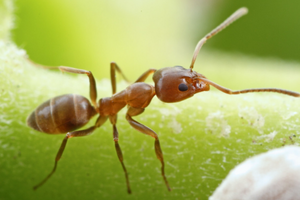
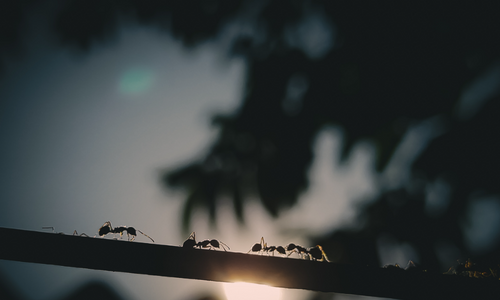


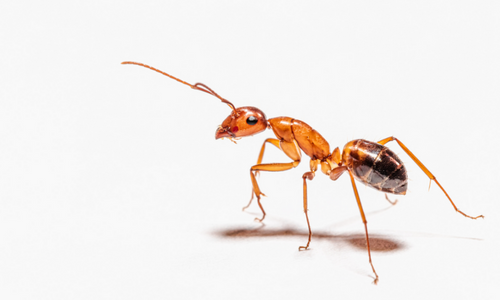
The Best Products 2023
Formicarium
Formicarium
Ant Farm
Ecosystem
Entomology supplies
Test Tube Packs
Pipettes
Feeding Dishes
Ant Foods
Ant Nectar
Feeders
Eco-Fresh Rice Worms
Fly Larvae
Kits
Terrarios
Nest Kit
Ant Farm Sand
Ant Farm Neon Gel
Ant Farm Ecosystems
| Ant Farm For Classroom | Light-up Ant Habitat |
| Ant House With Feeding Area | Wall Hanging Ant Farm |
| An ecosystem with live ants | Ant farm for Preschool |
| Pet Anthill Ant House | Nest Insect Castle |
| Glow In The Dark Ant Farm | Aquariums For Ants |
| Ant Farm With Instructions | Ant Farm With Queen |
| LED Ant Farm for Live Ants | Connectable Ant Farm |
| Ant Farm For Kids | New Large Plaster Ant Farm |
| Pocket colony | Ant Farm With Queen |
Ant Farm Supplies
| Feeder | Feeding Area |
| Tunneling sand | Tunnel starter tool |
| Ecological Ant farm gel | Ants farming aphids |
| Nutrition and Care | Ants farming mushrooms |
| Ecological blue gel | Fungus for ant farms |
| Handcrafted Wood | Ant habitats |
| Ant Plastic Tubes | Ant Glass Tubes |
| Food for ants | Ant Farm Nectar |
| Ant Farm Live Insects | More Supplies |
Live Ants For Sale
| Live Ants | Best ant species |
| Coolest Ants To Keep | Interesting Ants |
| Fungus-farming ants | Exotic ants |
| Big Ants | Buy Queen Ant |
| Buy Worker Ants | Buy Soldier Ants |
| Domestic ants | Fungus farming ants |

